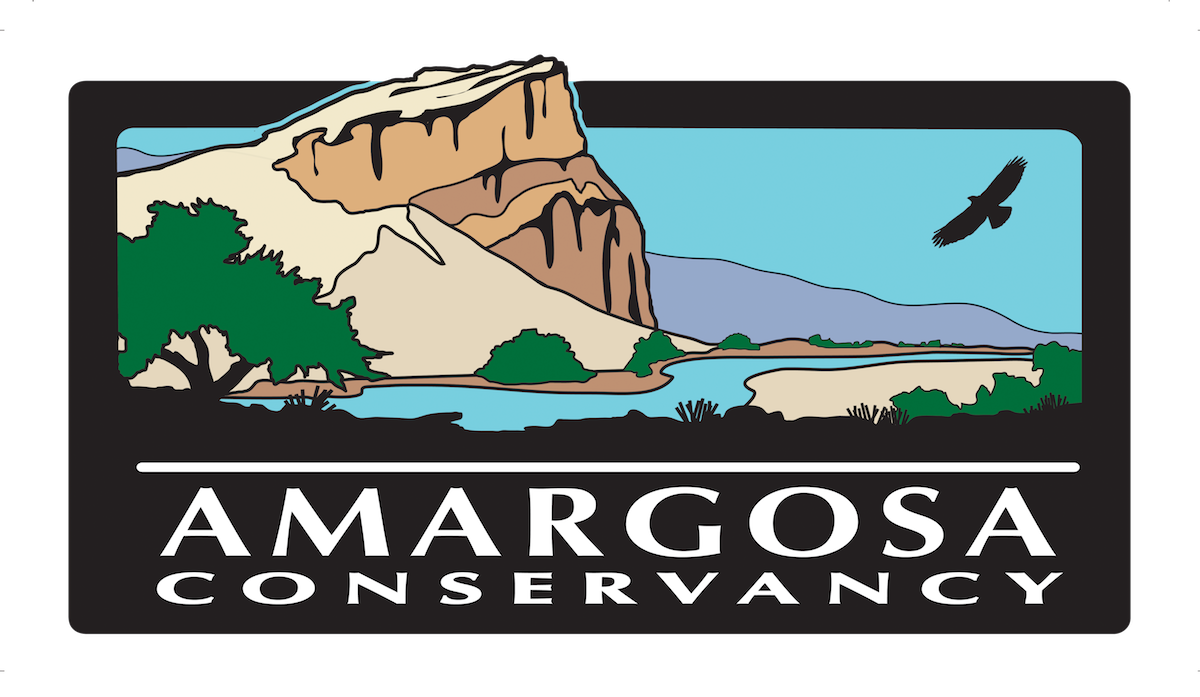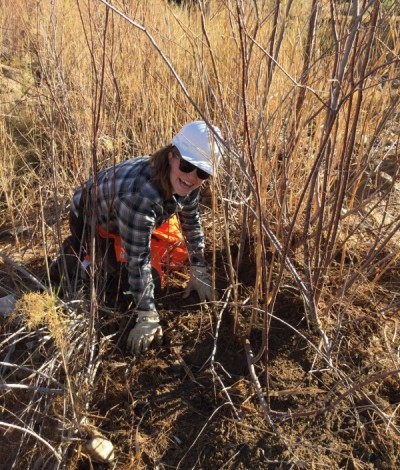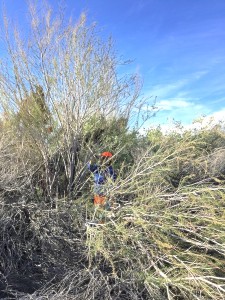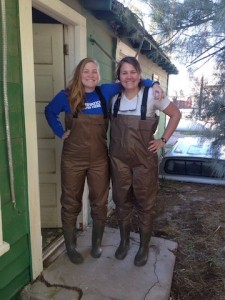Some might believe this is just a blown and barren land, but the Amargosa River has created an oasis in the desert. My workdays here in the Mojave Desert revolve around water: I spend every day outside and my work week starts and ends in muck boots. As an AmeriCorps intern through the Student Conservation Association (SCA), my role at the Amargosa Conservancy is to be a steward of the surrounding lands and waters. Recently, my efforts have been focused on removing tamarisk from the Shoshone wetlands.
Tamarisk, or salt cedar, is a non-native and invasive species that thrives in riparian areas. Although the Amargosa River flows mostly underground, we are fortunate enough to see it surface in the Shoshone wetlands where there are small waterfalls and deep mineral-water filled pools. By removing tamarisk from the ecosystem we are preventing it from lowering the water table, we are improving the opportunity for native vegetation to grow.
For the majority of the winter season, my field companion and fellow SCA intern, Abby, has worked alongside me cutting and applying herbicide to tamarisk trees. Each day we fill our packs with hand tools and field supplies and march out to the wetlands together. With our hard hats on, sunscreen applied, and saws in our hands, we’re ready to hunt for our tamarisk victims in the Shoshone Wetlands.
After the October flood events this past year, the riparian areas filled with debris and mud that have hardened under the harsh desert sun. As a result, a tool called the pick-mattock has become an especially close friend of ours. Abby and I break apart piles of dry mud and debris while wrestling with mesquite until we are able to expose the tamarisk trunks. We then cut and and treat each invasive stem with herbicide.
On one of our most memorable field days, Abby and I were preparing to cut a bigger tamarisk located on a steep bank along a big pool of water. We jumped into our new waders and crossed the mighty Amargosa to reach the tamarisk tree. After a half day of work, we had managed to break our way through debris to expose the main stem of the tamarisk at last. We were done! After passing Abby my tools, I prepared to wade back across to the other side of the river. I climbed across an entanglement of cattails and flood debris and soon found myself balanced atop a complex chain of tamarisk roots with the pool of water directly below me. As I stepped forward, I unexpectedly slipped and slid down a pile of cattails and into the river, waders and all. The water was deep, salty, and much cooler than I’d expected. I swam my way to the stream bank and collected my thoughts on the salty banks of the Amargosa. I did the unthinkable — I swam in the Amargosa.
Abby and I finished up our tamarisk removal project this past week. Reflecting back on our last two months, I feel fortunate to have been part of such a local-scale conservation project. I have witnessed collaboration between private landowners, the Bureau of Land Management (BLM), and the Amargosa Conservancy, illustrating how deeply involved community members are with our conservation projects. It has been an incredible learning experience to see how much progress can be made with a motivated community and a dedicated staff with varying areas of expertise. I am proud to have been involved with the Amargosa Conservancy during such a pivotal time and I am thankful to have had the opportunity to work with and learn from so many inspiring individuals.



